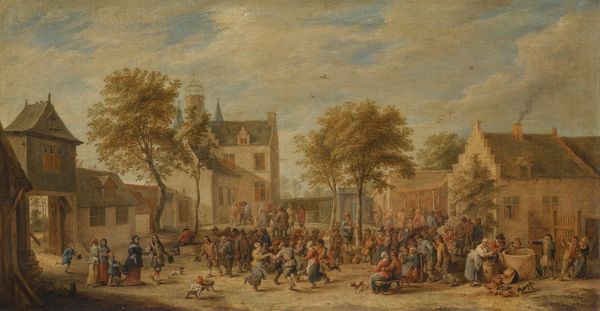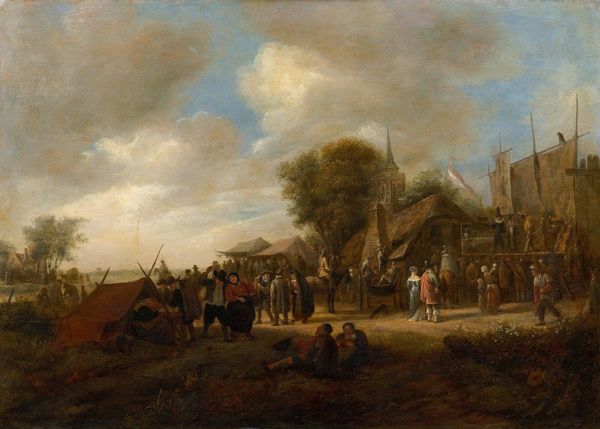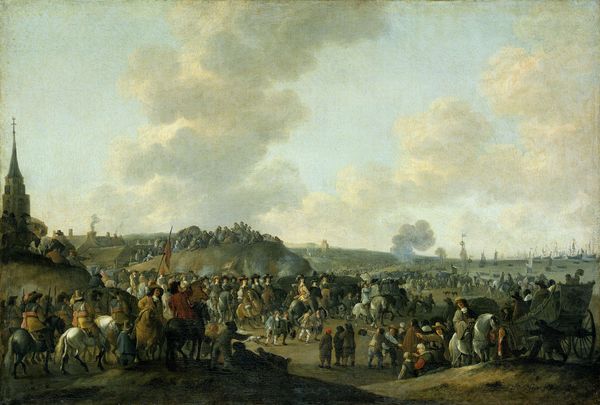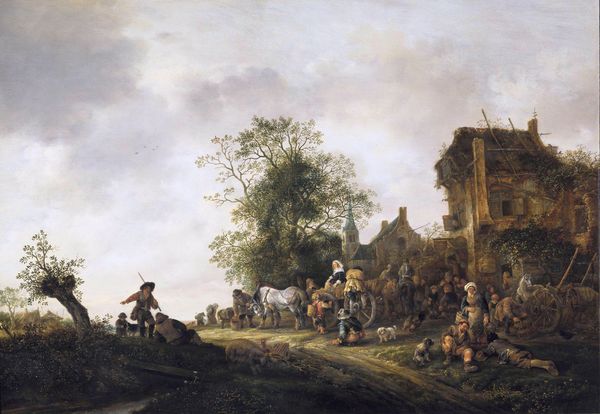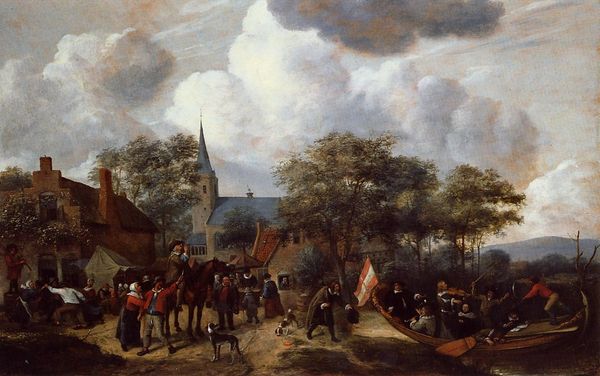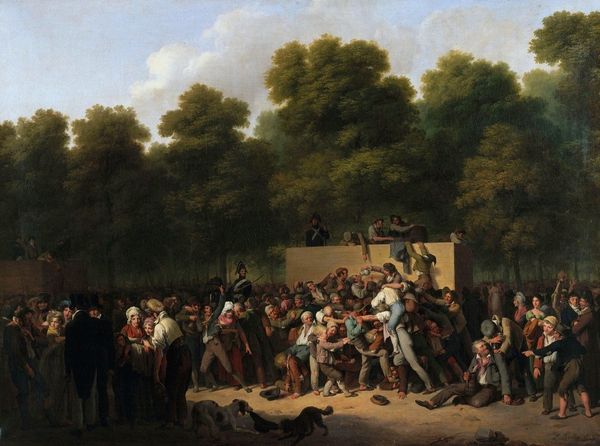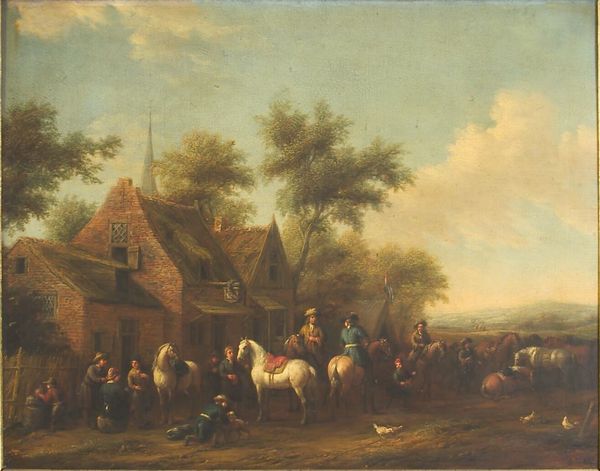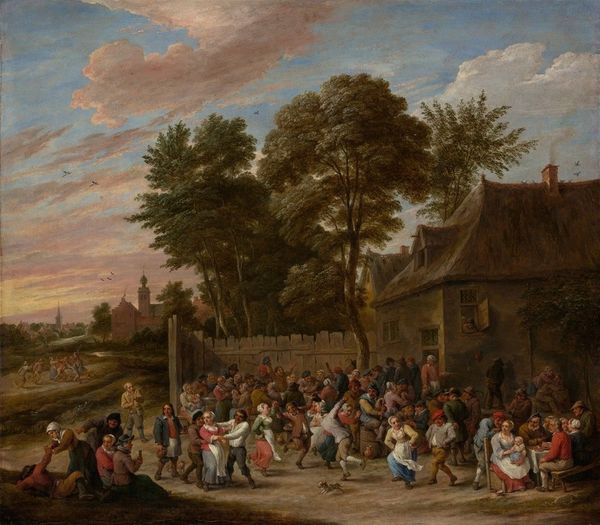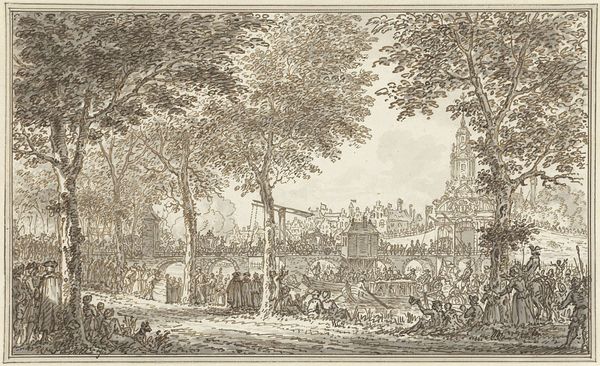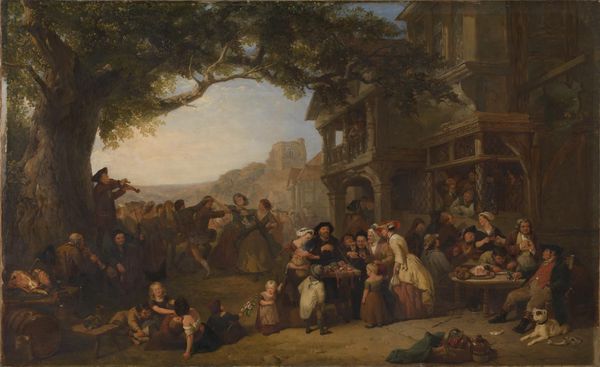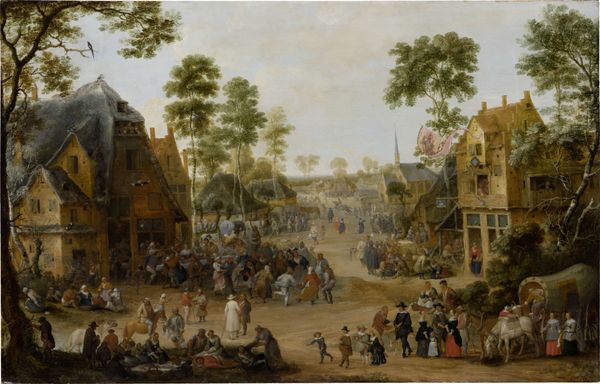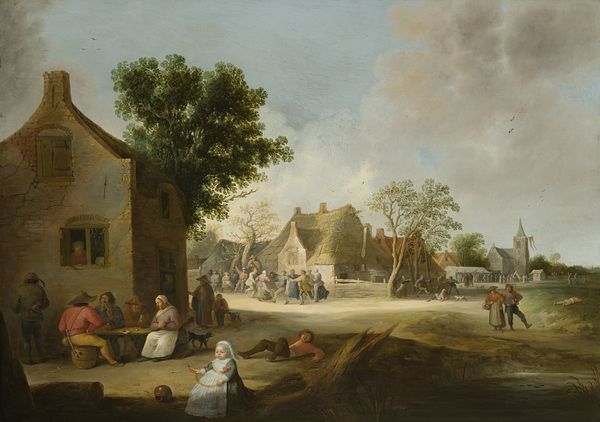
painting, oil-paint
#
baroque
#
dutch-golden-age
#
painting
#
oil-paint
#
landscape
#
oil painting
#
folk-art
#
cityscape
#
genre-painting
#
realism
Copyright: Public Domain: Artvee
Curator: Jan Steen offers us a teeming scene of "The Fair at Oegstgeest," believed to have been rendered between 1655 and 1660 with oil paint. What's your initial read of it? Editor: What strikes me immediately is how overwhelmingly busy it is. There’s a near chaotic energy in the way these figures are arranged. Despite that, the tones remain quite muted; there's an earthy quality. Curator: That visual frenzy is part of Steen's strategy. He’s known for depicting daily life with all its disorder and pleasures. I’m fascinated by the interplay between labor and leisure within the composition – notice the figures haggling, the carts of goods suggesting market activity, but all happening within this carnival-like atmosphere. The canvas really embodies this duality, hinting at a developing consumer culture. Editor: I’m drawn to how the symbolism seems to undercut any sense of idyllic festivity. Look at the church spire juxtaposed against the revelry, almost a silent judge. And what of the various figures strewn across the foreground? The overt symbolism is that vice is prevalent here, perhaps warning against the earthly delights in which these laborers engage. It presents an image of how life should not be. Curator: Interesting you bring up the moralizing tone, and how that links with cultural anxieties of the time. But look at the actual crafting of this 'warning,' as you say. He employed assistants, so even the dissemination of this image had social impact, and these materials - the oil, the canvas - would have held significance to period consumers of art and culture. What could viewers make of that production process? Editor: Yes, considering those choices definitely affects interpretation. The placement of certain figures and items also carries substantial cultural weight, guiding us through that reading of morality and social chaos. For example, note how dogs often indicate the most basic instincts of hunger and aggression – as those primal qualities weave into the daily activities depicted here. Curator: So ultimately, it’s that complex relationship between the artist, the materials, the patron, and the populace which speaks volumes to the dynamics of Golden Age Netherlands. Editor: Precisely, a riotous symbol reflecting humanity’s timeless push and pull between societal constraints and unbridled desires.
Comments
No comments
Be the first to comment and join the conversation on the ultimate creative platform.
